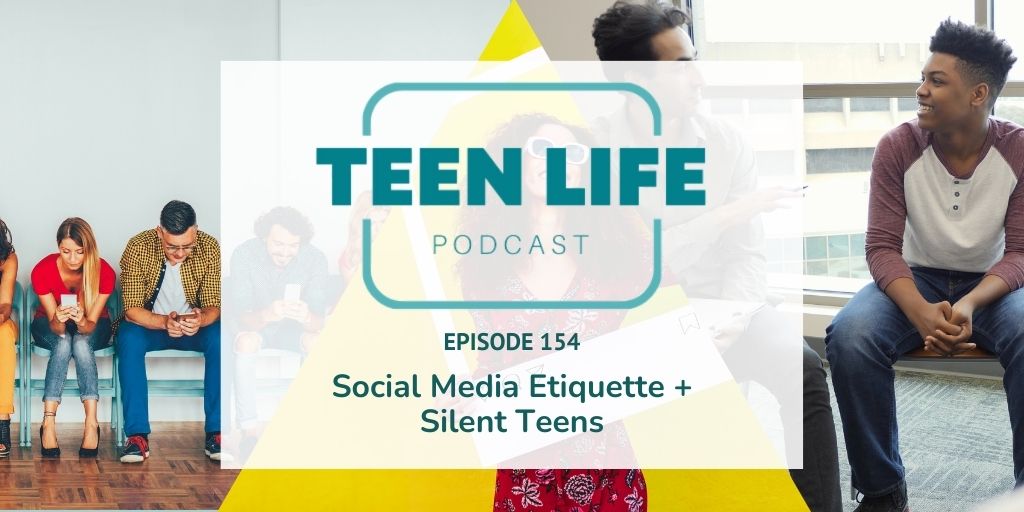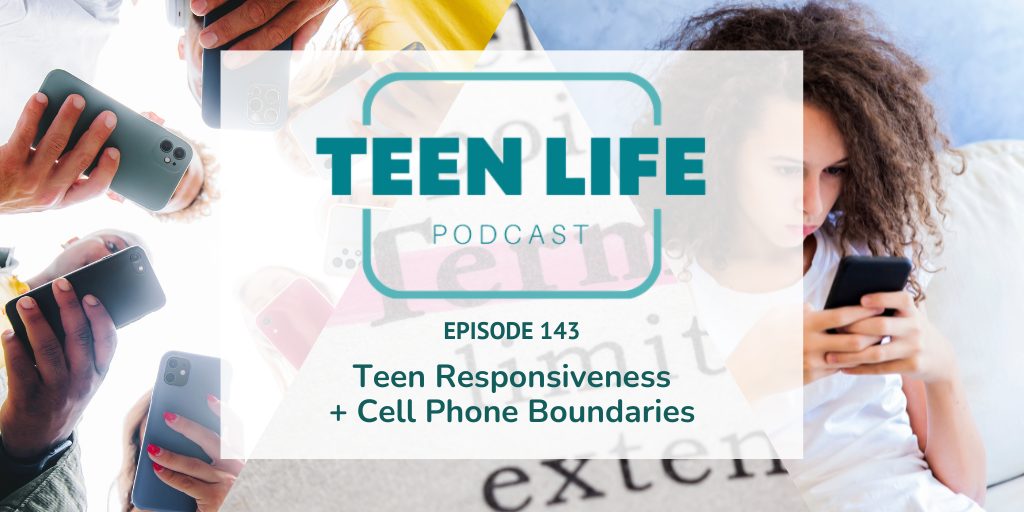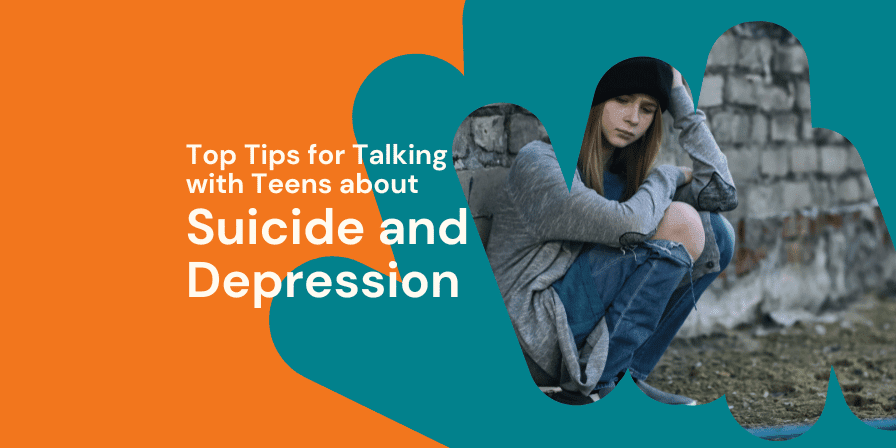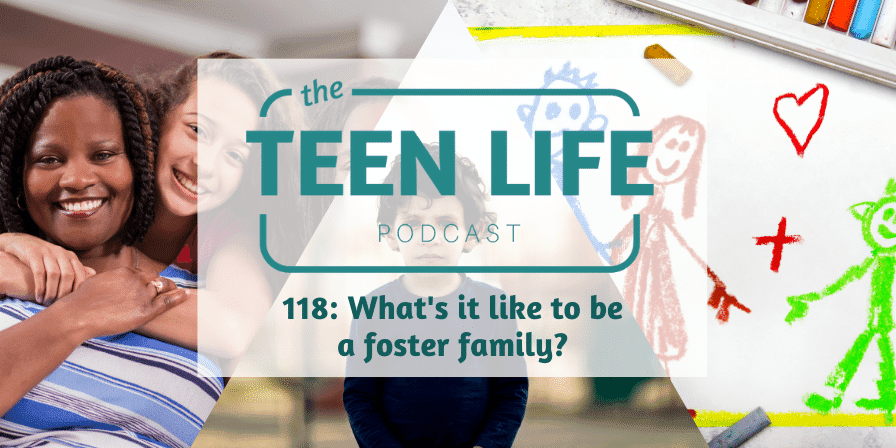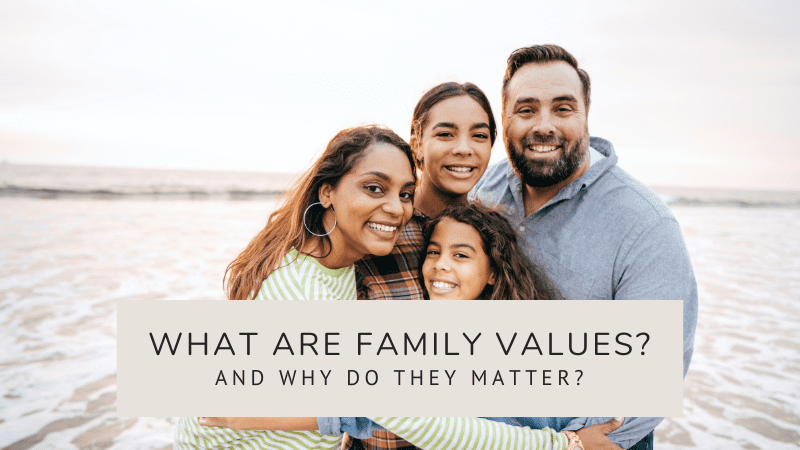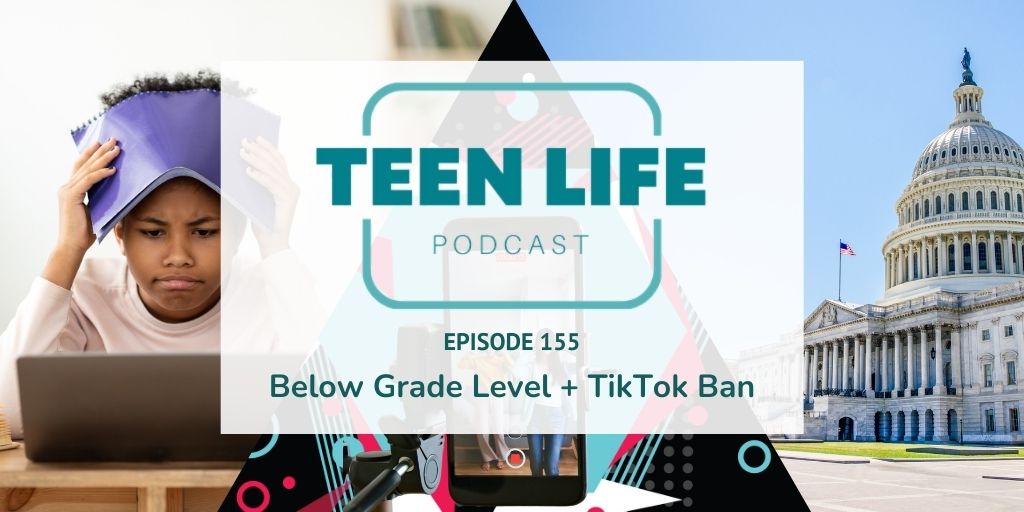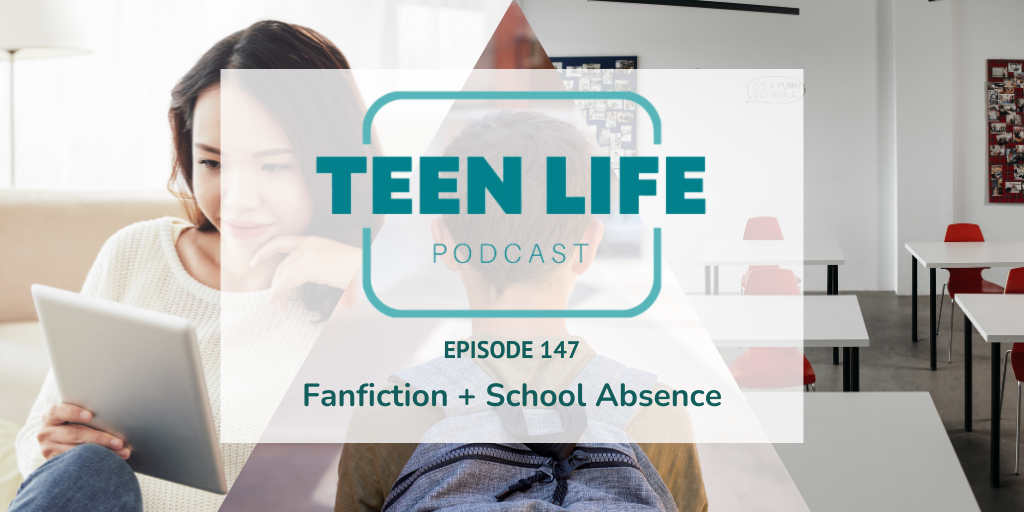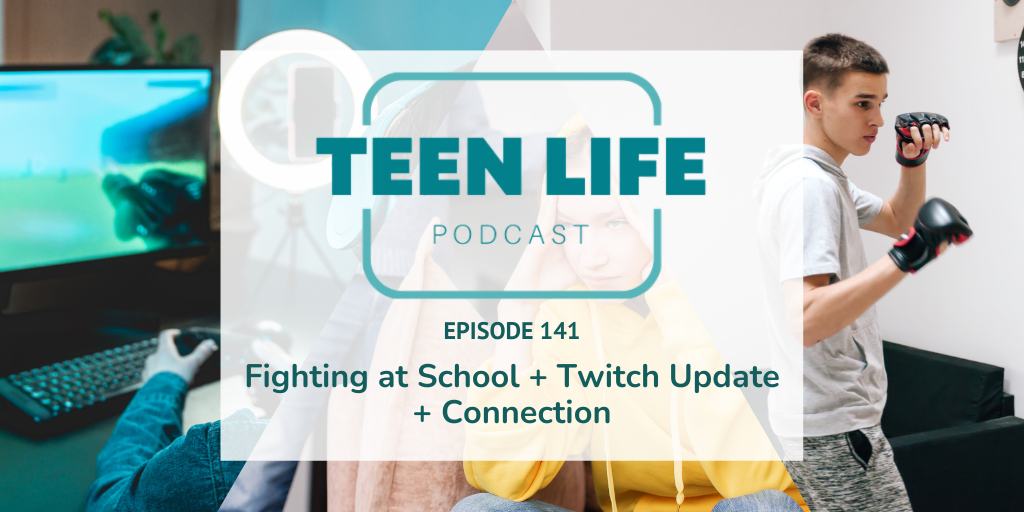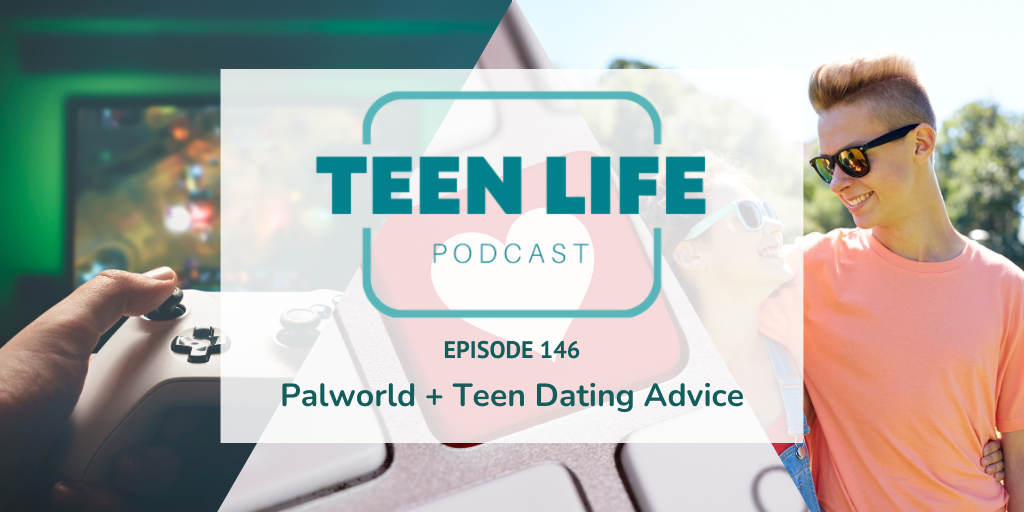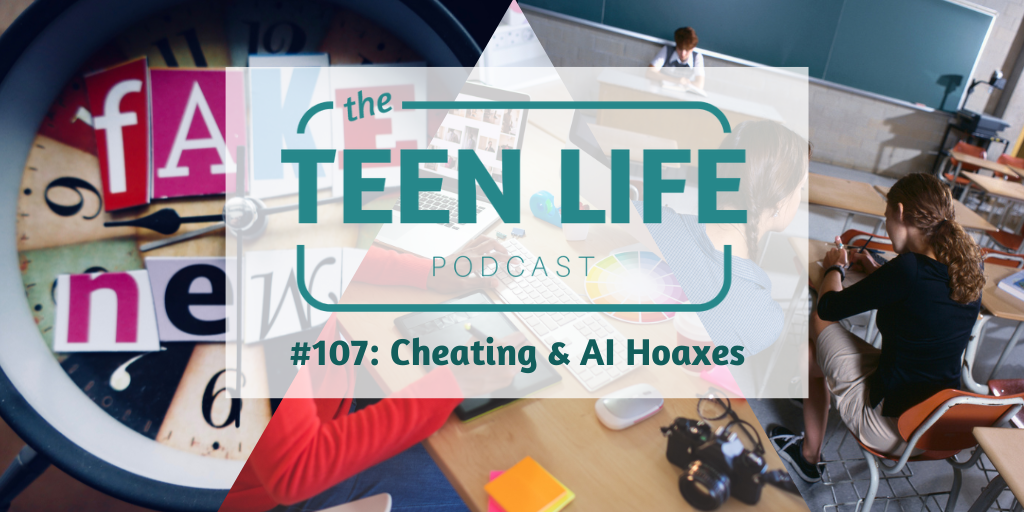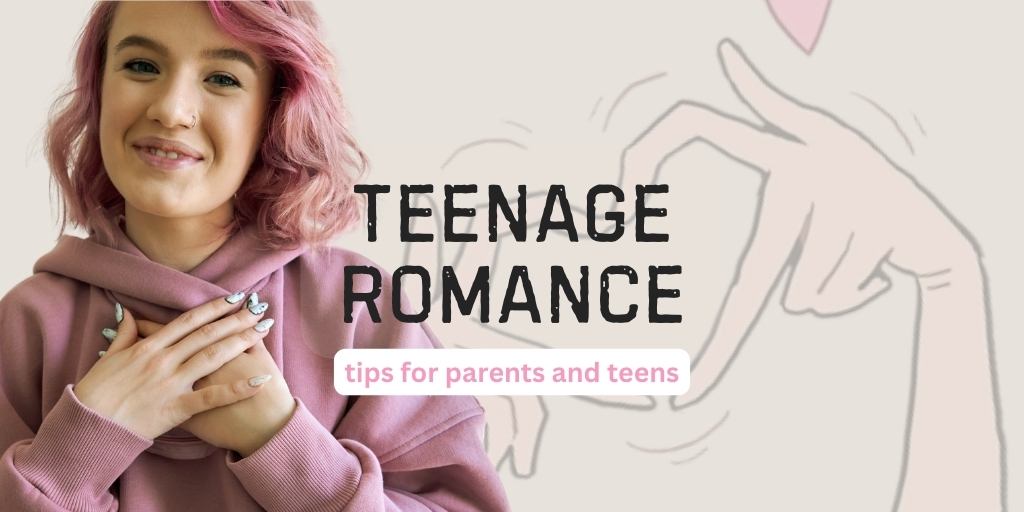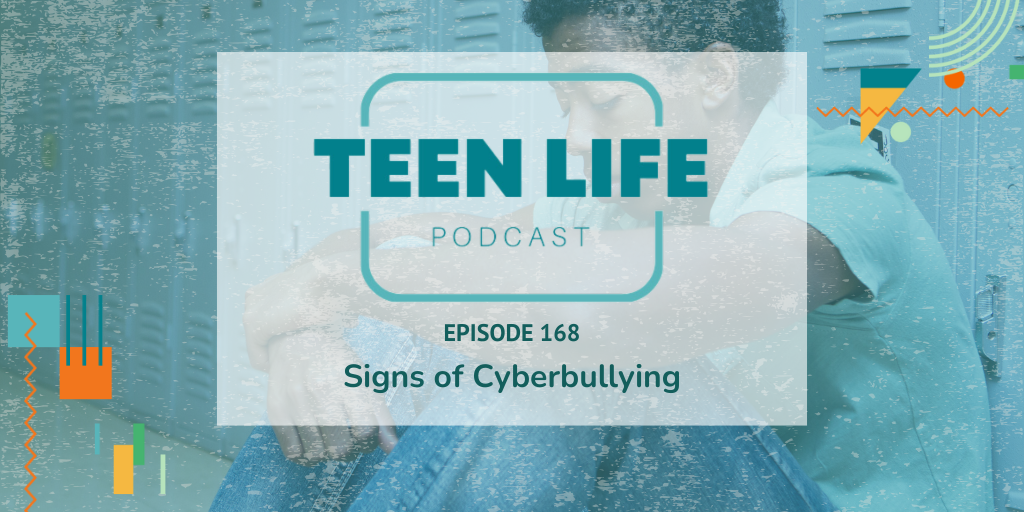
Signs of Cyberbullying | Ep. 168
Podcast: Play in new window | Download
Spotting Cyberbullying and Offering Support: A Guide for Caring Adults
The world of cyberbullying is complex and often its results are beyond our control. As caring adults, it is crucial to learn to recognize when a teen is affected and offer meaningful support.
The digital age has brought unique challenges, and cyberbullying can often go unnoticed, leaving teens feeling isolated and vulnerable. We’ll be breaking down key signs of cyberbullying, sharing insights into what teens may be experiencing, and equipping you with compassionate, effective steps to help.
Whether you’re a parent, teacher, or mentor, this episode is packed with practical guidance for supporting teens as they navigate their online interactions safely.
Key Question
How can I recognize and manage cyberbullying?
What We Cover
00:00 Understanding Cyber Bullying
07:03 Recognizing Signs of Cyber Bullying
11:53 Addressing Cyber Bullying in Schools
17:55 Creating Safe Spaces for Discussion
How to Recognize Cyberbullying
Cyberbullying can take many forms, from overt harassment to more subtle but damaging interactions.
Here are some indicators that a teen might be experiencing it:
Behavioral Changes
Withdrawal from social activities, mood swings, a sudden drop in grades, and avoidance of things they once enjoyed can all be signs.
Physical Signs
Changes in sleeping or eating patterns, self-harm, or physical signs of stress.
Preoccupation with Online Presence
If a teen is overly focused on their online interactions or deletes their social media accounts, it could be due to bullying.
Evidence of Hurtful Interactions
Watch for hurtful or threatening messages, or if you notice an anonymous account targeting your teen or their peers.
What Can We Do to Help?
Create a Safe Space
Foster open communication by making it clear that there is no judgment and that they are supported.
Stay Calm and Listen
Resist the urge to jump into immediate action; instead, allow the teen to express their feelings and concerns.
Document the Bullying
Encourage saving screenshots, messages, and any other evidence of the bullying.
Involve Trusted Adults
Reach out to school administrators if it involves classmates or school activities, and consider involving law enforcement if there are threats, stalking, or illegal behavior.
Encourage Empathy
Discuss the impact of online interactions and encourage them to think about how words and actions affect others.
Perspective Shift
Cyberbullying is especially difficult for teens, as it can feel both embarrassing and deeply personal. They may not reach out for help because of fear or shame.
Being proactive can make a huge difference because waiting for them to come forward may mean waiting too long.
TL Tips & Takeaways:
Encourage blocking and reporting
Help teens feel empowered by encouraging them to block and report bullying accounts.
Set Boundaries (and Model Them)
Show that setting boundaries is healthy, and model this behavior in your own online interactions.
Validate Their Feelings
If a teen does open up about their experience, validate their feelings and, if needed, connect them with counselors or other trusted adults.
Tune in to gain practical insights and tools to help the teens in your life navigate and overcome the challenges of cyberbullying. If you find this episode helpful, don’t forget to subscribe on YouTube or wherever you listen to podcasts.
Have a question or a topic you’d love to hear about? Reach out on social media or email us at podcast@teenlife.ngo.
Read Episode Transcript
Tobin (00:06)
How can I recognize and manage cyberbullying? And man, that’s a, that is a question. Welcome back to the Teen Life Podcast. My name is Tobin and I’m here once again with Caleb and Carly. And guys, that’s, that’s kind of a heavy lifter today. I feel like I’m always the one that has to read those questions, the heavy ones. So, full disclosure, cyberbullying is, a very broad subject and it’s something that I think
Caleb Hatchett (00:26)
Yeah.
Karlie Duke (00:30)
We do that on purpose, Tobin.
Caleb Hatchett (00:31)
Yeah.
Tobin (00:41)
has been overplayed and underplayed and not recognized and over recognized. And when you hear the word cyber bullying, it probably it probably stirs a certain reaction every in every one of you. And so just know that we’re we’re kind of coming at this in a more broad sense today. And obviously, we don’t have the answers to everything. But in this can be a lot of things also like I can’t speak for Caleb and probably call her a little bit, but I’m I am too old for cyberbullying. I don’t even really
Like there wasn’t really internet whenever I was a teenager. so, this is, this is something that I did not experience as a teenager. So, first and foremost, let’s talk about ways that we can recognize it. And the thing that you might recognize in your team is, is behavioral changes like withdrawal, mood swings, declining grades, avoidance of things that they used to do. Like if, you know, if they’re involved in something that all of sudden they all, they don’t want to go, that’s a pretty clear cut sign that they’ve.
experienced some sort of bullying or more specifically cyber bullying. Physical signs of changes, like physical signs like changes in eating, sleeping, self-harm. I would even go as far to say like the way they dress and like in changing the way they dress because of either they’re trying to hide something or trying to fit in more into something that’s not their personality. Excessive concern over their online presence. That is a huge one right now.
Everywhere they go, do they have to have a picture? Do they have to have an Instagram moment? Do they have to take 20 poses of pictures? You know, at restaurants when we’re going to the cheesecake factory, stuff like that. so, the other thing is, they deleting accounts? Are they deleting social media accounts? they, are they running? I want to say running away, but are they, are they quickly leaving a situation where they’re not doing a social media account anymore?
And then if you, the obvious ones, if you see hurtful or threatening messages, or you notice like anonymous accounts that have posts about your team, like that’s a, that’s a pretty big red flag. So those are some quick lists of things, ways to recognize it. Carly and Caleb, what do y’all have to add to that? Or like maybe some like, like dive deeper on one of those.
Karlie Duke (02:55)
One thing I would add too, if a teen is on a phone and you come up and not even like trying to sneak, but just are around them and they hide it quickly or they start acting really weird about it. in the last episode, we talked about red flags, like just keeping aware of some red flags and asking more questions if that happens, because if they’re not wanting you to see their phone or they’re jumpy or like there’s probably something that they’re reading.
Either they’re doing something they’re not supposed to, or they have a fear that’s attached with that device because they’re seeing something that worries them or that is hurting their feelings, stuff like that. And a lot of times, especially if you’re at school, eventually this kind of stuff gets around, especially if it’s coming from a more public account and it’s not just one-on-one, you’re gonna hear rumors, you’re gonna hear people talking about it. So just keep your ears open for that stuff.
because teens aren’t super great at keeping secrets long-term. They just aren’t. A lot of times it’s gonna come out.
Caleb Hatchett (04:01)
I mean, I don’t know. Like you said, though, it’s so broad of a thing that it’s, it’s, it’s really hard to, to define, to even nail down. Cause I mean, nowadays you have so many, like Carly even said, like these anonymous, accounts, things like that schools will have, you know, their bar stool accounts where they’ll post memes, things like that of like people on the team and whether it’s like,
you know, in good-hearted fun, or they make fun of thousands. Like if it affects your team in a way, right. Then, then at that point, right. It’s, it’s something that needs to be on your radar and that you need to know about, but it’s, I don’t know. It’s so hard because a lot of it is, you know, if bullying, you can place a name and a face, whereas all of the way that these accounts and people are anonymous, it’s really hard to place and nail down.
Karlie Duke (04:50)
Right. And I think for our teens today, it’s not when I think cyber-bullying, I think someone like messaging, threatening messages or saying mean things over text or DM. And that also can happen. But I think the way that we’re seeing it more and more with our students is like Caleb said, anonymous accounts who post memes and pictures that are embarrassing of people. When I was in high school, there were Facebook pages, which probably isn’t a thing anymore, but there are Facebook pages,
Caleb Hatchett (04:58)
Mm-hmm.
Karlie Duke (05:20)
created called I hate this person and everyone would get on there and post teens are a little smarter now and they know that can if their name is attached that can easily be screenshot and taken to school and they can get in trouble for it and so that’s where anonymous things Caleb you might know better but I know YikYak is still a thing that is anonymous
Caleb Hatchett (05:41)
Hmm. YikYak kids. Some students are just like opening themselves up to it of like, you know, Instagram story, things like that of like.
Even when I was in high school, there’s big thing was like ask FM and it was like, you could set this up, and then people would ask you questions or send things in and it was completely anonymous. And so, you know, sure. I’m sure they’re getting questions, but they’re also opening themselves up to just random people, whether it’s their close friends or not, just saying things mean.
Karlie Duke (05:58)
Mm-hmm.
Tobin (06:03)
Mm-hmm.
Caleb Hatchett (06:13)
And demeaning and they don’t know who it’s from, right? And so then it’s left open to be like, okay, who is this? And it was like, do this is true and begin to spiral. And so, I mean, there’s a lot of outlets and, and yeah, I mean, acknowledging that a certain point of it is opening yourself up to it. But I mean, even with these accounts, I have a friend.
who in college had someone make like a fan account for him. And it’s like mainly just funny pictures. And he’s a guy who like,
His center of attention is easy just to laugh it off. But if that’s someone else and there’s like all of these weird pictures that like they’re posting, it’s like, that’s a it’s weird. And it is weird in this case too, but it can go quickly the other way of like, what is going on? Like, is this out of malice, things like that. And so it’s just such, it’s a wild, wild world out there. And especially social media is just.
in a lot of ways, what do other people think of me? And especially as teenagers, they’re finding ways to literally ask other people what they think of them.
Tobin (07:26)
Yeah. The bottom line is, is that you know, your team, if you’re a parent-student or a parent-mentor or teacher, you know that team. So if you see a change, it’s, it might be important for you to kind of lean in and figure out what’s causing that change. Is it a bullying situation or it could be a myriad out of other things. Like we all know that, but, being proactive in that situation and just kind of knowing that if I’m seeing a change, here’s how, here are some things that I can do to like make that, make that work.
It can feel like the perspective shift is, is it can feel incredibly embarrassing and like as a teen or really anybody, but if you, if you’re in a situation where you’re getting made fun of, you’re very vulnerable. if you’re like me and a people pleaser, that’s probably the worst. It’s the worst nightmare is to be someone that is, that is on the bad side of somebody else. we can’t wait for them to say something. I mean, like, I’m not trying to be dramatic, but like,
That’s the kind of stuff that builds up and it it creates scars that will last forever. For some people, the reality is that if it builds up and builds up, it puts them in a headspace where they might do something that hurt themselves or they might they might carry something for years that they don’t need to carry. But so like be proactive. If you see a difference in your in the teenager, a simple question, a simple thing to just kind of open the space for them.
It can make a big difference.
Caleb Hatchett (08:54)
Yeah. And I mean, as a parent, it’s, there’s some things that you can do, right? If you’re following your student on their social medias and they’re posting things like, you know, I think now it’s like TBH, like to be honest. And then people will fill out like to be honest, dot, dot, dot. Here’s what I think. And a lot of times the teens will post the good ones on their story again and respond to it. But also as parents, it’s acknowledging that
you know, especially with social media, there’s a lot that you don’t see too, whether it’s, you know, private Instagram or they have private stories, things like that. And so there are things that, yes, you should be on your radar that you’re trying to pick up as red flags on their social media. But like we’ve been saying, you also have to be aware and acknowledge whether it’s a shift in behavior or something else that’s happening.
But I think like what you can do to help is create, and again, it’s, it’s an everything that we say is create a safe space to talk about it without fear of judgment, right? And knowing hopefully like you, that you’re not a source of self doubt, things like that, that you’re speaking life and continuing to build them up and staying calm and listening before jumping into action and also acknowledging like it’s not your job to like start a manhunt necessarily and track down like this kid and find their IP address. Like it’s okay. There’s other avenues like document the bullying, save screenshot messages, and then involve other trusted adults and school admin and, and see if they can help shut down the accounts or things like that.
Karlie Duke (10:14)
You
Caleb Hatchett (10:29)
there there’s other ways, but again, just, yeah, creating a safe space and making sure just double sure that, you are not a source of self-doubt or low self-esteem in your student as well. And just being watching what you say on things like that, you know, of.
outfits and not demeaning or even questioning what they’re wearing. Like, yes, there’s probably some points, right? Are you sure you want to wear that? There’s better ways to go about it. and making sure that, that you’re not a source of that as well.
Karlie Duke (10:59)
I think that staying calm, peace is so important because I think if they say something and you immediately overreact and maybe it honestly isn’t an overreaction, maybe it deserves that reaction, but before you listen to everything that’s happening and asking the question, what can I do to help?
What do you need from me in this situation? Because it might just be, I just need to tell someone. And then when you say, okay, well, what can we do to stop this? And it might be a simple action of like, you know what? I’m just gonna block that person. And then you really didn’t have to do much of anything and you have set them up for success because you asked really good questions and you didn’t just jump in to fix it. You didn’t like call parents. You didn’t go up to the school and embarrass them.
But at the same time, there are times where you have to involve the school or if you’re a teacher and you’re hearing things that you need to go to someone say, hey, I’m hearing this. There is an account going around that is like, know.
I’ve heard of schools in situations where like rival schools will create accounts and they’ll put the heads of students on inappropriate pictures or really they’ll take really unflattering pictures and they’ll use Photoshop and especially with AI now it’s so much easier to put things in their hands that don’t belong there or to make comments about
what they’re doing with boyfriends or what they look like or what they dress like. And if you are seeing that and hearing that and you’re a school person, that is definitely an appropriate time to go to admin and say, Hey, here’s what I’m hearing in my classes. They’re talking about it. There was a girl that ran out of my class upset today. Like whatever that looks like, how can we help them take this down? How can we find out what’s happening so that we can make our students feel safe? Because a lot of the times what’s hard about cyber-bullying is it’s not happening at school, but most of the time it is school -elated because it’s peers. And so to just say that’s a home problem and I don’t have to mess with that just isn’t true because it’s gonna affect your classroom. It’s gonna affect what they’re doing if they’re able to study at home and so it does affect schoolwork. And then obviously there are some instances where if it involves threats,
If it involves illegal activity, if you think your student is being stalked because someone is constantly texting or posting or following their Instagram account and knowing where they are at all times, that might be time to talk to police or law enforcement to make sure that they are safe.
And then I also think just in general, talking about empathy and talking about how words and actions online impact others is just never a bad thing to talk about. Cause I think it’s real easy to be, to use a screen as a shield and to distance yourself from that and not think about like, Hey, would you ever say that in person? And most of the time it’s like, absolutely not.
Caleb Hatchett (13:52)
Mm.
Karlie Duke (14:06)
Or if my name was attached to it, I would never post that because I would get in trouble. But then why are you going to do it anonymously or over a screen? Or why would you comment that? Or I also think once again, it’s hard to track and that’s why cyber-bullying is so tough. But if a student posts something and then it starts getting shared behind the scenes of, you see what she was wearing? did you see this? Can you believe this?
and it starts getting passed around, that’s a really hard thing to track, but it also is just as damaging because that student is sitting there going like, man, I thought that was fun. And now everyone is talking about it and laughing about it behind my back. And I don’t even have a way to track that. And so just be aware and ask good questions, especially if your student is on social media. We’ll talk a little bit more about boundaries and stuff.
for technology next week. But this is maybe also a reason why younger students shouldn’t have social media or should have more of that. So make sure you’re setting boundaries and make sure you’re modeling healthy boundaries with social media and technology yourself as well.
Caleb Hatchett (15:22)
I like what you said too about making sure and creating conversations even with your students of making sure that they’re not the ones doing the cyber-bullying, right? Of making sure that it’s safe and understanding a healthy relationship with the internet and with…
Others in acknowledging like hey, even if like they are your close friends and an anonymous thing comes up that you’re able to just like able to take a jab it doesn’t come across as that because now they’re wondering and questioning and so Yeah, making sure that that your students aren’t the ones doing it and you know if they find out if you find out that they are having those conversations with them as well of like Here’s why we don’t and here’s yeah, kind of like Carly said I would you ask this in person things like that and so
and then again encouraging your teens to you know, even report and Block the offensive accounts so and as always validate their feelings Making sure that you know, even if you’re like really
Come on. That was pretty funny. Right? Like that meme was pretty funny. You got to admit, validating their feelings and of knowing like, okay, like, right. If they’re feeling it in this way, whether it’s in good fun or not, that, that it needs, that it needs to be addressed or talked about, with your, with your student.
Karlie Duke (16:26)
Okay.
Yeah, and I think there are obviously also times where cyber-bullying is too strong of a word to use for something that’s happening. So maybe it’s not bullying, but if your student is in a group text with someone who is making vulgar comments or sending things that they feel is inappropriate or not something that they want to be part of, like it’s good to have a conversation with, do you need to leave that group?
Caleb Hatchett (16:53)
Yeah.
Karlie Duke (17:11)
Are they the outlier and the group needs to band together and say, we’re going to kick this person out of the group? is it something, like I said, there’s, was made aware of a situation at a school recently in our area that a student was saying inappropriate things about a girlfriend of one of the guys that they were in the group with. And it got to the point where, like the school had to be made aware because threats and inappropriate comments are not okay and it was upsetting the students that were hearing it or seeing it and it was also upsetting to the girl who was like I’m just sitting here doing nothing and I’m getting just blasted by this kid and so I think like I said being aware of if a student is
distancing- like they used to hang out with this person and now they’re distancing, asking questions. It might not be bullying, but like, Hey, is something happening online or video games? If they’re spending a lot of time together on video games, that looks a little different because you can’t trace it. can’t, like call back messages, but at the same time, maybe there’s something going on there that you need to ask questions about and make sure that everyone feels safe. Everyone feels like they’re being respected.
and we can move on as well.
Tobin (18:37)
a reminder too that we’re all figuring it, figuring out social media at the same time. Still kind of, it’s, still a very new thing. so as an adult in this situation, just remind yourself, one, this is new for everybody. Is there anybody that you’re, that you see as an adult that you’re like, man, I wish they would stop doing that or they would stop posting that. And we as adults need to start training our, our teens and generation below us on how to.
manage online presence a little bit better than, than what we’ve all been doing because we all are new to this. so, just, just a reminder, just, yeah, like Caleb said, validate your feelings, make sure everybody feels safe. And yeah, this is a tough situation, but, hopefully with this knowledge, just to kind of help you. So we thank you so much for, being here again for our question today, and we will see you again next week on the Teen Life Podcast.

Karlie Duke
Communications Director

Tobin Hodges
Program Director

Caleb Hatchett
Podcast Host
Karlie Duke | Director of Communications
Karlie has always had a heart for teenagers. Through her role at Teen Life, she loves to showcase the amazing stories coming out of Support Groups, but she is especially passionate about helping adults and teenagers find connection. Karlie has a BS in Communications with a minor in Family Studies from Abilene Christian University.
Caleb Hatchett | Podcast Co-Host
Caleb loves helping teenagers take ownership of their faith and relationships. He graduated from Abilene Christian University with a degree in Youth and Family Ministry and is currently Student Ministry Director at Jenks Church in Oklahoma.
Tobin Hodges | Program Director
Tobin’s entire career has been centered around students and teens from all walks of life. He has a passion for helping teens be their best selves. As Program Director, he loves working directly with school staff and students through Teen Life Support Groups. Tobin has a Bachelor’s Degree in Music from Texas Tech University.









